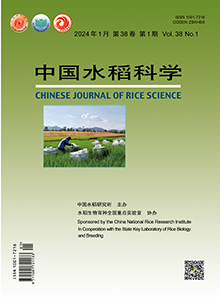【Objective】 The study aims to investigate the impact of soil drought from the late stage of panicle differentiation to the early stage of grain filling, on root morphology, physiology, and leaf photosynthetic characteristics of high-quality japonica rice. This research provides a theoretical foundation for drought-resistant cultivation. 【Method】 Nanjing 9108 and Fengjing 1606 were chosen as test materials. Two soil drought treatments were implemented: light drought (LD, soil water potential at −20±5 kPa) and severe drought (SD, soil water potential at −40±5 kPa). These treatments were applied for 20 days, spanning from the late stage of panicle differentiation to the early stage of grain filling (BAH, 10 days before & 10 days after heading), 10 days during the late stage of panicle differentiation (BH, 10 days before heading), and 10 days during the early stage of grain filling (AH, 10 days after heading). A well-watered treatment was used as the control (CK). 【Result】 1) Root length, root surface area, root volume, root tip number, root dry weight, and root activity for treatments within BAH, BH, AH followed a trend of SD<LD<CK at the end of drought stresses, 10 days after the end of drought stresses, 30 days after heading, and maturity. However, the root-shoot ratio exhibited the opposite trend. At the end of drought stresses, root indicators for SD and LD treatments within BAH significantly differed from CK, while root indicators for SD within BH and AH significantly differed from CK, except for the root-shoot ratio. Root indicators for LD treatments within BH and AH were not significantly different from CK. At the three stages after the end of drought stresses, root indicators for SD within BAH significantly differed from CK, and LD treatments were not significantly different except for root tip number. Root surface area, root volume, root tip number, and root dry weight for SD treatments within BH significantly differed from CK, while no significant differences were observed among the three water treatments within AH. 2) Net photosynthetic rate (Pn), transpiration rate (Tr), stomatal conductance (Gs), intercellular CO2 concentration (Ci), maximum photochemical efficiency (Fv/Fm), and photochemical quenching coefficient (qp) for the treatments within BAH, BH, AH showed SD<LD<CK at the end of drought stresses, 10 days after the end of drought stresses, 30 days after heading, and maturity. Conversely, non-photochemical quenching coefficient (NPQ) exhibited the opposite trend. At the end of drought stresses, indicators of photosynthetic parameters for SD and LD treatments within BAH significantly differed from CK, and there were significant differences between LD and SD, except for Ci. Indicators for SD treatments within BH and AH significantly differed from CK, while LD treatments were not significantly different from CK. At the three stages after the end of drought stresses, indicators for SD treatments within BAH significantly differed from CK, while LD treatments did not. Only Pn, Tr, and Fv/Fm for SD treatments within BH significantly differed from CK, with no significant differences observed among the three water treatments within AH. 3) Yield for drought treatments within all three periods showed SD<LD<CK. Significant differences were observed among the three drought treatments within BAH and BH, with no significant difference between LD and CK within AH, both of which significantly differed from SD. 【Conclusion】 SD and LD within BAH inhibited root growth and leaf photosynthesis, resulting in a significant reduction in yield, with a smaller impact under LD. Plants under SD within BH found it challenging to return to control levels after treatment, leading to yield reduction. In contrast, plants under SD and LD within AH could recover quickly after treatment. In conclusion, rice root and leaf growth are more sensitive to drought treatments during the BH period in the late stage of panicle differentiation and early stage of grain filling.

